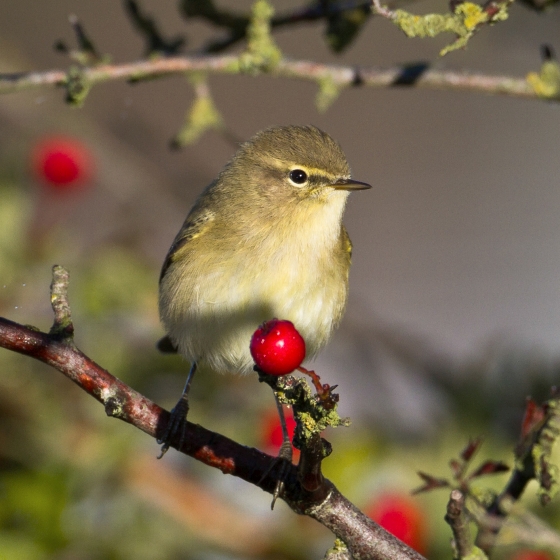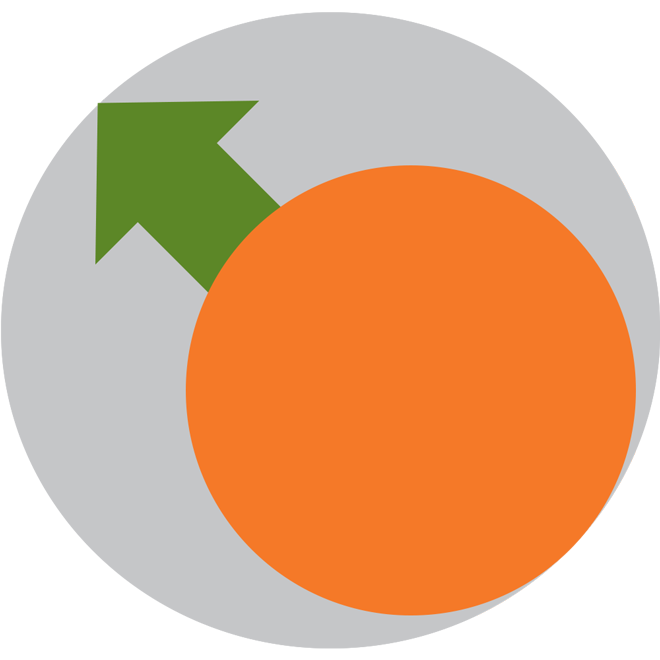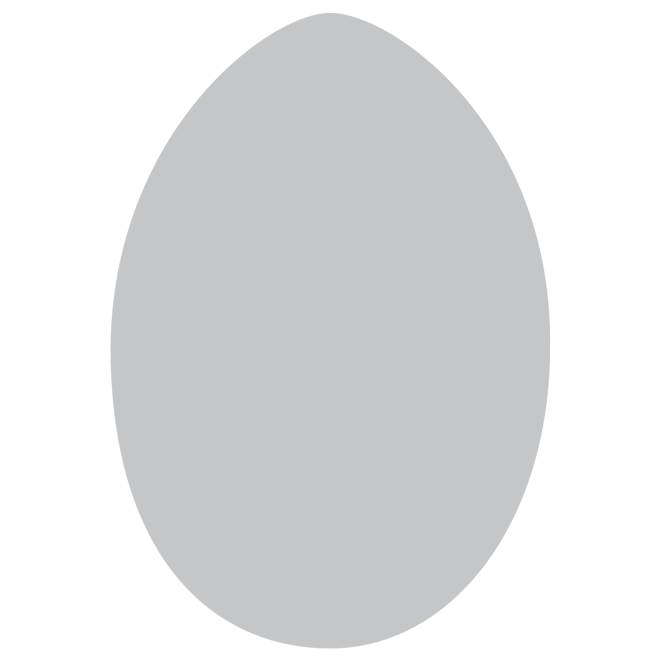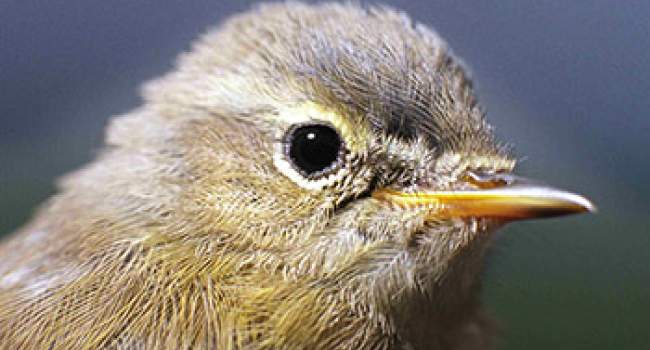Chiffchaff
Phylloscopus collybita (Vieillot, 1817)
CC
 CHIFF
CHIFF  13110
13110

Family: Passeriformes > Phylloscopidae

This small warbler is easily identified by its onomatopoeic "chiff chaff" song, after which it was named.
Chiffchaffs breed widely in Britain & Ireland, apart from on the highest ground. In recent years, this species has been expanding its breeding range north into Scotland, with BTO research suggesting it is benefitting from climatic warming in that part of the UK. Breeding Chiffchaff numbers have also risen in the UK in recent decades, especially in Scotland, although there is some indication that this trend is now levelling off. In autumn, many breeding Chiffchaffs depart for southern Europe and North Africa, but increasing numbers are staying for the winter months. They are among the earliest singers in the breeding season, being heard from February onwards.
Chiffchaffs are yellow-olive coloured warblers, that closely resemble a dull Willow Warbler. Luckily, the songs of the two species are very different. Male and female Chiffchaffs look alike. The species favours deciduous woodland and scrub, but can also be found in reedbeds, parks and gardens. It is insectivorous, and can sometimes be spotted catching prey on the wing.
Exploring the trends for Chiffchaff
Our Trends Explorer will also give you the latest insight into how the UK's Chiffchaff population is changing.
trends explorerIdentification
Chiffchaff identification is often straightforward. The following article may help when identifying Chiffchaff.
SONGS AND CALLS
Listen to example recordings of the main vocalisations of Chiffchaff, provided by xeno-canto contributors.
Call
Song
Develop your bird ID skills with our training courses
Our interactive online courses are a great way to develop your bird identification skills, whether you're new to the hobby or a competent birder looking to hone your abilities.
Browse training coursesStatus and Trends
Population size and trends and patterns of distribution based on BTO surveys and atlases with data collected by BTO volunteers.
CONSERVATION STATUS
This species can be found on the following statutory and conservation listings and schedules.
POPULATION CHANGE
Chiffchaff abundance declined in the late 1960s/early 1970s in common with that of other trans-Saharan warblers (Siriwardena et al. 1998a). After remaining stable for a decade, the population recovered strongly, and has continued to increase. This recovery is evident from both CBC/BBS and CES data. The BBS map of change in relative density between 1994-96 and 2007-09 indicates that increase over that period occurred across Britain but that, in Northern Ireland, decrease in the west contrasted with increase in the east. More recent BBS trends show that increases have occurred in England and Wales since 1995, and particularly strong increases in Scotland, with numbers in Northern Ireland fluctuating. There has been an increase across Europe since 1980 (PECBMS: PECBMS 2020a>).
| UK breeding population |
+113% increase (1967–2020) 
|
Exploring the trends for Chiffchaff
Our Trends Explorer will also give you the latest insight into how the UK's Chiffchaff population is changing.
trends explorerDISTRIBUTION
Breeding Chiffchaffs are widespread throughout Britain & Ireland, being localised on Scottish islands and absent only from upland areas. Breeding abundance is high throughout much of England, Wales and the southern half of Ireland but generally decreases northwards across Ireland, northern England and Scotland. Wintering Chiffchaff are widely distributed throughout the southern half of Britain, and less widely in Ireland. Winter records farther north in Britain are relatively sparse and occur in coastal or lowland locations.
Occupied 10-km squares in UK
| No. occupied in breeding season | 2562 |
| % occupied in breeding season | 85 |
| No. occupied in winter | 1212 |
| % occupied in winter | 40 |
European Distribution Map
European Breeding Bird Atlas 2
Breeding Season Habitats
| Most frequent in |
Deciduous Wood 
|
| Also common in | Scrub |
Relative frequency by habitat
Relative occurrence in different habitat types during the breeding season.

DISTRIBUTION CHANGE
The breeding distribution in Ireland has remained relatively unchanged since the 1970s whereas in Britain there has been a 20% range expansion over the same period, with most of the gains being in northern Britain.
Change in occupied 10-km squares in the UK
| % change in range in breeding season (1968–72 to 2008–11) | +18% |
| % change in range in winter (1981–84 to 2007–11) | +83.7% |
SEASONALITY
Chiffchaff is a scarce winter visitor and common summer migrant, arriving from early March. There is a pronounced passage in August, September and October.

Movement
Information about movement and migration based on online bird portals (e.g. BirdTrack), Ringing schemes and tracking studies.
An overview of year-round movements for the whole of Europe can be seen on the EuroBirdPortal viewer.
RINGING RECOVERIES
View a summary of recoveries in the Online Ringing Report.
Foreign locations of birds ringed or recovered in Britain & Ireland

Biology
Lifecycle and body size information about Chiffchaff, including statistics on nesting, eggs and lifespan based on BTO ringing and nest recording data.
PRODUCTIVITY & NESTING
Exploring the trends for Chiffchaff
Our Trends Explorer will also give you the latest insight into how the UK's Chiffchaff population is changing.
trends explorerSURVIVAL & LONGEVITY
View number ringed each year in the Online Ringing Report
Maximum Age from Ringing 
|
7 years 7 months 24 days (set in 1997) 
|
Typical Lifespan 
|
2 years with breeding typically at 1 year |
Adult Survival 
|
0.306±0.036  
|
Juvenile Survival 
|
0.222 (in first year) 
|
Exploring the trends for Chiffchaff
Our Trends Explorer will also give you the latest insight into how the UK's Chiffchaff population is changing.
trends explorerBIOMETRICS
Wing Length 
|
Adults | 59.4±3 | Range 55–64mm, N=20540 |
| Juveniles | 59.2±3.9 | Range 55-63mm, N=37946 | |
| Males | 61.5±1.8 | |
| Females | 56.2±2 |
Body Weight 
|
Adults | 7.70±0.77 | Range 6.50–9.00g, N=18276 |
| Juveniles | 7.51±0.7745 | Range 6.40–8.90g, N=33342 | |
| Males | 7.95±0.57 | Range 7.10–8.90g, N=4095 | |
| Females | 7.40±0.85 | Range 6.30–9.00g, N=2767 |
Feather measurements and photos on featherbase 
CODES & CLASSIFICATION
Ring size 
|
AA |
Field Codes 
|
2-letter: CC | 5-letter code: CHIFF | Euring: 13110 |
For information in another language (where available) click on a linked name
Research
Interpretation and scientific publications about Chiffchaff from BTO scientists.
CAUSES AND SOLUTIONS
Causes of change
Information about the drivers of change for Chiffchaff is limited, but overwinter survival may be the critical factor responsible for changes in abundance.
Further information on causes of change
Climate change may partly explain the strong trend towards earlier laying (Crick & Sparks 1999), which is in line with an advance of two weeks in the arrival dates of Chiffchaff in the UK, between the 1960s and 2000s ( Newson et al. 2016).
Overwinter survival may be the critical factor responsible for changes in abundance, as it is for Whitethroat and Sedge Warbler. These three species all show strong relationships between overwinter survival and population change (Johnston et al. 2016). Productivity as measured by CES has decreased as the population has risen, but there has been no change in fledglings per breeding attempt or in CES survival.
Information about conservation actions
The population of this species has increased since the 1980s with minor fluctuations, hence it is not a species of concern and no conservation actions are currently required.
Research focused on this species is limited and hence few specific conservation actions have been proposed to benefit Chiffchaffs. A study at Wytham Woods found that nests were usually built close to the ground in brambles and that predation was the main cause of failure (Rodrigues & Crick 2010). Management actions to promote understorey vegetation growth would therefore be likely to provide nesting options for Chiffchaffs.
PUBLICATIONS (1)

Breeding ground temperature rises, more than habitat change, are associated with spatially variable population trends in two species of migratory bird
A tale of two warblers
Breeding Bird Survey (BBS) results show very different population trends for Willow Warbler and Chiffchaff - but what is driving this difference? BTO research reveals climate is key.
Links to more information from ConservationEvidence.com
Would you like to search for another species?














Share this page